Seeing through the haze
A classroom resource to engage students’ critical thinking skills to create change for a vape and smoke free future
Years 9-10





CUR RICULUM AREAS - HEALTH AND PHYSICAL EDUCATION, SCIENCE, LITERACY, NUMERACY, CIVICS AND CITIZENSHIP, MEDIA ARTS
CLASSROOM RESOURCE YEARS 9 –10
Introduction
For the past 30 years, people working in public health have been finding ways to reduce smoking rates – and their efforts have paid off! The Australian Institute of Health and Welfare (2022) recently showed smoking rates have consistently decreased since 1991. BUT, smoking is still the leading cause of preventable death and disease (Cancer Council website).
More recently a new threat to public health has emerged – VAPING. Data analysed by Cancer Council Victoria’s Centre for Behavioural Research in Cancer shows sharp increases in the use of e-cigarettes (a.k.a vapes) by young people, including teenagers. Not only are we seeing increases in vaping among young people, there are recent signs that smoking among young people may also be on the rise! Research by the Australian National University has found that young people who vape are about three times as likely to take up smoking.
People who sell vapes are really good at getting our attention. They use social media like TikTok and Instagram to show off vaping. There are tons of posts and profiles all about it. Research from the Cancer Council has shown that TikTok is home to more than 18.1 billion posts with the hashtag #vape and Instagram has 18,000 ‘vaping influencer’ profiles solely dedicated to promoting vaping.

All of this has led public health groups to call for change, like introducing new laws, regulations and education programs aimed at young people’s use of e-cigarettes (a.k.a vaping).
Your task
Now, here's where you come in! You're going to be a health researcher for your community. You'll look into why everyone is talking about vaping and how it affects health. You'll also find out why companies want young people to use their products. And the best part? You'll help create a plan to make sure our community is a healthy, vape-free place.
In the next few lessons, you'll learn all about these things and use that knowledge to make a cool campaign. This campaign will help make sure our community stays free from vaping. You'll complete three sections:
> Getting the facts
> Seeing through the haze
> Making change
1. What do you think are the main or obvious issues related to e-cigarettes?
3. What do you think are the best ways to reduce harms associated with vaping?
2. What do you think are the main harms associated with using e-cigarettes for young people?
What do you already know about e-cigarettes?
2 SEEING THROUGH THE HAZE | CLASSROOM RESOURCE YEARS 9–10 PART 1 – GETTING THE FACTS
As you review the different media below, take notes in the space provided. Once you have done that, what are the main findings from your review?


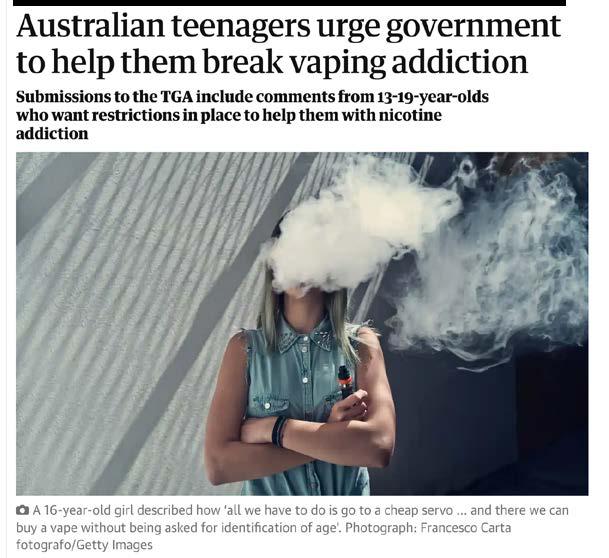
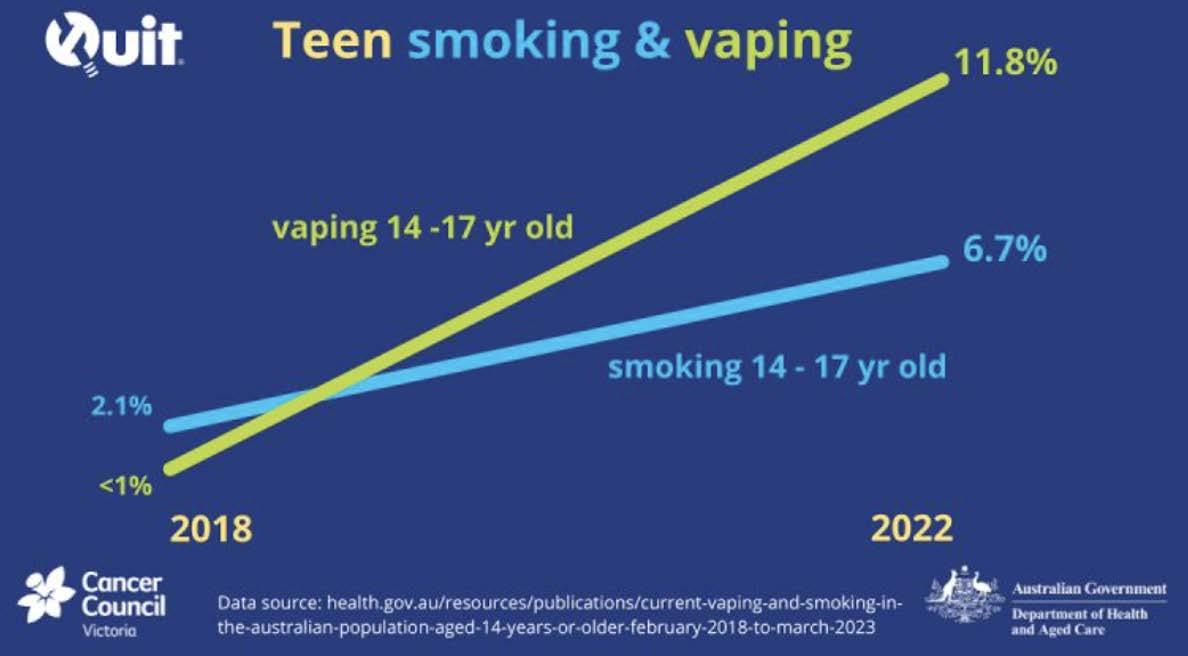
“All we have to do is go to a cheap servo … and there we can buy a vape without being asked for identification of age….” – 16-year-old girl
3 SEEING THROUGH THE HAZE | CLASSROOM RESOURCE YEARS 9–10 PART 1 – GETTING THE FACTS
“Some of us aren’t doing it to look cool, some of us are genuinely struggling with addictions or are using them as coping mechanisms like a stress reliever.” – 17-year-old girl
Source: Therapeutic Goods Administration submission
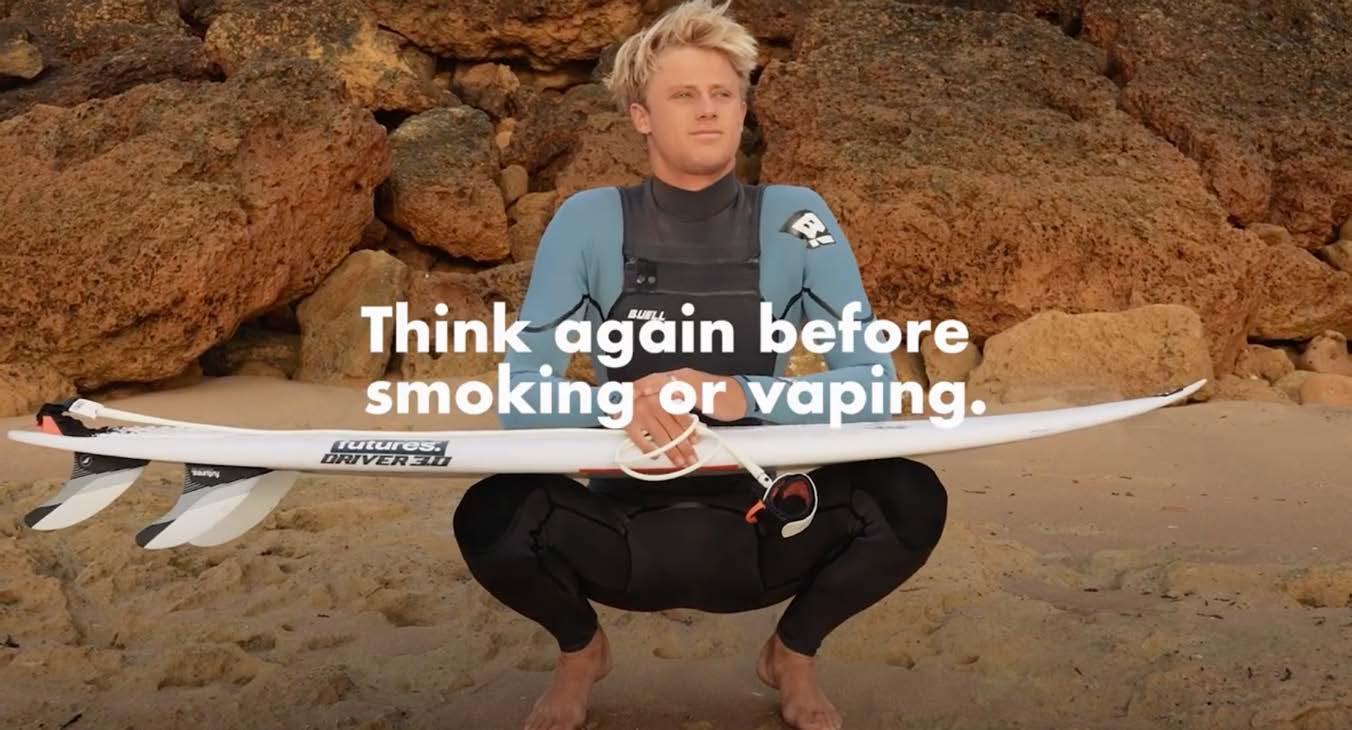

What do you think?
1. Did you learn anything new about vaping?
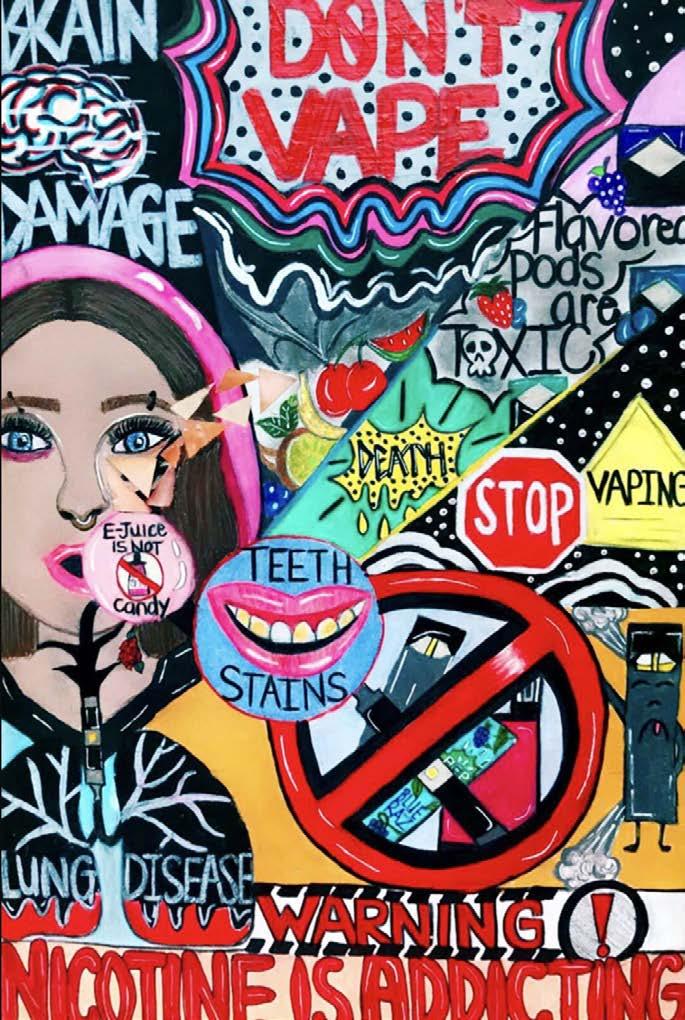
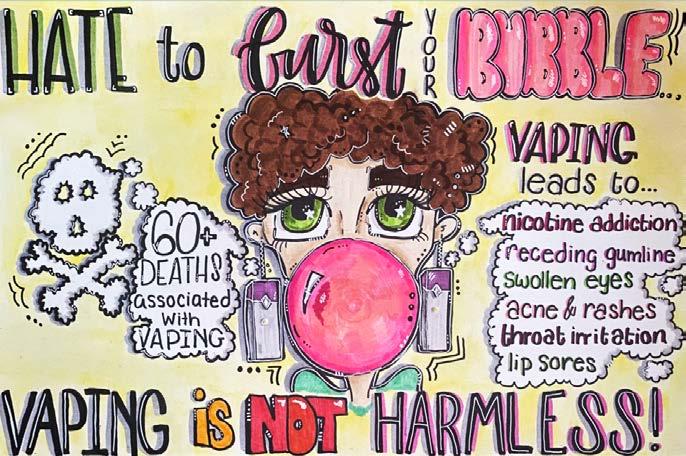
2. Is there a particular image or text that has grabbed your attention more than the others? If so, why do you think this is?
Source: The Real Cost campaign posters
Video Link: Bohdie Williams – Quit Victoria
4 SEEING THROUGH THE HAZE | CLASSROOM RESOURCE YEARS 9–10 PART 1 – GETTING THE FACTS
Video Link: My Vaping Mistake
Getting the facts
Activity 1: Information source analysis
When you are conducting research, you need to make sure that the information you access is reliable and accurate.
Choose a couple of different sources of information, such as a government website (.gov), a TikTok video, a news media release and/or a scientific journal article and carry out a source analysis.
To do this, use the below template for an ABCDE (Accuracy, Bias, Currency, Depth, Evaluate) scaffold analysis. Alternately you can use any other template your teacher suggests that will guide you through the process. When carrying out a source analysis you will need to consider the expertise of the author, whether there is any bias present, and when the information was communicated.
Criteria Explanation
Accuracy Is the information accurate? Does the information contradict or confer with other sources from scientific or government websites? Is the information evidence based?
Bias Is the author putting forward their own point of view on vaping? If so, is the intention to educate, inform, promote or advertise? Are they representing a particular interest group or commercial organisation?
Currency How recent is the information? Does it contain the latest scientific data and knowledge? When was the website last updated?

Examples and notes
Depth Is the depth of information sufficient for its audience and the question being asked?
Evaluate Who is the author, what are their credentials and which organisation do they belong to? Which source are they writing for? Are the domains educational (.edu), governmental (.gov) or independent (.org)?
5 SEEING THROUGH THE HAZE | CLASSROOM RESOURCE YEARS 9–10 PART 1 – GETTING THE FACTS
Activity 2: Finding out the facts
In order to create vape- and smoke-free spaces, we need to understand the problem. Vaping influences many different areas of our lives. Fill in the following circles with facts that you can find through your research across a range of different categories. One has been filled in for you as an example.
Use the resources available or find your own. As you research information to answer your selected questions, use a research table to create an annotated bibliography. Otherwise you can use this citation maker to log the references: MyBib
• Vaping facts- QUIT
• Health impacts of electronic cigarettes - ANU College of Health & Medicine
• Generation Vape - Cancer Council NSW
• The dangers of nicotine in vaping liquid - QUIT
• E-cigarettes and vaping - Lung Foundation Australia
• Exposure to secondhand e-cigarette emissions - Tobacco in Australia
• Plain packaging - A landmark victory against Big Tobacco - Cancer Council
Physical Health
Health
Use of shared spaces
change
issues /justice
Once you have a series of facts, highlight the ones you think might be most relevant to your vape-free space campaign. Are there any facts that you think are more important than others?
Eg. Vapes may contain nicotine, a highly additive substance, even if they have not been labelled as such.
Mental
Chemicals in vapes
Legal
Politics Climate Change Social
relationships Creating
NO SMOKING OR VAPING 6 SEEING THROUGH THE HAZE | CLASSROOM RESOURCE YEARS 9–10 PART 1 – GETTING THE FACTS
PENALTIES MAY APPLY Tobacco Act 1987
Activity 3: Mental and physical health
Create a poster of the many evidence-based health related issues you can find in the research. Include mental as well as physical health issues, and short-term as well as long-term health effects. Use a table similar to the one below to collect your ideas and research. Once completed, you can share your poster with your peers. What are the common health themes in the posters?
Resources:
• E-cigarettes and vaping - Lung Foundation of Australia
• Vaping: Everything you need to know about e-cigarettes- VicHealth
• Get the facts on vaping - QUIT
Health impacts What effects might vaping have?
Worsen asthma symptoms
Lung injury
Nausea and vomiting
Seizures
Coughing, wheezing, shortness of breath
Nicotine dependence
Mouth and throat irritation
Anxiety and depression
For discussion:
In summary what are the main health issues caused by vaping?
7 SEEING THROUGH THE HAZE | CLASSROOM RESOURCE YEARS 9–10 PART 1 – GETTING THE FACTS


Activity 4: Causing harm
Consider the following scenarios and decide whether they cause harm.
Activity Causes harm? Y or N Who or what is harmed and how? Explain your answer
A person buys a set of single use vapeequipment because it is cheaper than buying multi-use vape-equipment
A group of people are using e-cigarette in a space where other people are eating lunch
An influencer tells young people about all the latest e-cigarette flavours
Discarded e-cigarettes ending up amongst plastics recycling
E-cigarettes that look like highlighters
E-cigarettes lying around the house
8 SEEING THROUGH THE HAZE | CLASSROOM RESOURCE YEARS 9–10 PART 1 – GETTING THE FACTS
Activity 5: Looking at the data
The graphs at right show the number of calls relating to e-cigarettes received by the Australian Poisons Information Centres; increased rates of teen smoking and vaping; and declining rates of smoking associated with public information campaigns and regulation of tobacco in Australia.
Resources:
• Vaping and e-cigarette use on the rise among young people InSight+
• Generation VapeCancer Council NSW
• Vaping in Australia Alcohol and Drug Foundation
• E-cigarettes are an environmental triple threat
Numbers of cases related to e-cigarette exposures reported to Australian Poisons Information Centres, by calendar year and state.
Most young people do not vape. However:
• E-cigarette use has increased substantially in Australia over the past few years.
• E-cigarette use particularly prevalent amongst young people.
• When people use e-cigarettes, they are more likely to start smoking.


Number of cases
YEAR 0 10 20 30 40 50 60 70 NSW VIC QLD SA WA TAS ACT 80 2009 2010 2012 2016 2014 2015 2013 2011
Source: Medical Journal of Australia (2019).
GRAPH 1: Calls to Australian Poisons Information Centres
GRAPH 2: Teen smoking and vaping rates
Source: https://www.acmi.net.au/works/121942--smoking-prevalance-and-tobacco- control-in-victoria/ 9 SEEING THROUGH THE HAZE | CLASSROOM RESOURCE YEARS 9–10 PART 1 – GETTING THE FACTS
GRAPH 3: Smoking prevalence and tobacco control in Australia
Activity 5: Looking at the data – Questions
1. Describe the trend in Graph 1. How have the number of phone calls to the Australian Poisons Information Centres changed from 2009 to 2016?
2. How many more phone calls were made across Australia in 2016 compared to 2012? Show your working.
3. Predict the total number of calls for 2017. Show how you estimated this.
4. Describe what Graph 2 shows about teen vaping and smoking.
5. Graph 3 shows the campaigns to reduce smoking and the effect on smoking prevalence in Australia.
a. What is the range of the graph?
b. How does the graph change from 1991 to 1995?
c. Where is the rate of change highest in the graph? Justify your response using evidence from the graph.
6. What might this data mean for your campaign?
10 SEEING THROUGH THE HAZE | CLASSROOM RESOURCE YEARS 9–10 PART 1 – GETTING THE FACTS
Activity 6: Statistics and graphics
The statistics that inform us of the use of e-cigarettes are changing constantly. Using this or another website, choose a statistic that you can represent graphically – such as a pie chart to show the reasons why young people want to quit their use.
QUIT: Get the facts on vaping
Using Canva, Powerpoint, Excel or another tool, provide labels, annotations, a key, title, explanation or any other information that will help communicate the anti-smoking and vaping message in your graphic. You could include these statistics in your campaign.

Activity 7: How our environment can impact our behaviour
There are external influences in someone’s immediate environment that influence whether they try e-cigarettes. Can you think of any situations that might increase or decrease someone's likelihood of trying or using e-cigarettes? Suggest how each variable listed below might influence the use of e-cigarettes.
Variable Increase/decrease/not influence the use of e-cigarettes
Lots of vaping shops in the area
A best friend uses e-cigarettes
A family member is vaping
Someone uses social media constantly
There are no antismoking or vaping signage at school
Your ideas:
Justification for your idea. Is there evidence to support your idea?
11 SEEING THROUGH THE HAZE | CLASSROOM RESOURCE YEARS 9–10 PART 1 – GETTING THE FACTS
Activity 8: Stopping vaping
Stopping vaping can be hard. Knowing that there is support available and that there are people to talk to who care can make a real difference.
Nicotine is a very addictive drug that is found in most e-cigarettes in Australia, even when the label doesn’t say so. Most people who vape report wanting to stop. Motivations for wanting to stop include health, financial and social reasons. In 2022, the Victorian Quitline received calls from clients as young as 12 years seeking help to stop vaping.
1. What resources, websites or services exist locally to help people stop vaping? List at least three and provide details on what each offers somebody who wants to stop vaping.
a. What they offer:
b. What they offer:
c.
What they offer:
How
2. Who in your community or network could help someone who wanted to stop vaping? (Eg school nurse, GP)
12 SEEING THROUGH THE HAZE | CLASSROOM RESOURCE YEARS 9–10 PART 1 – GETTING THE FACTS
3.
could you support a friend who wanted to stop vaping?
Activity 9: Share your findings
Prepare a short presentation for your peers or class. This could be created using Canva, Powerpoint, a short video, or poster, for example. Includes some of the questions you worked on earlier and some of the data you have investigated so far.
Design questions that your audience can fill out as you present your findings. These questions will help give you feedback on different aspects of your research.
Question
Which information do you think is the most useful?
Which information do you think should be investigated further?
Are there any other/alternative questions I could be asking or researching?
Who do you think might be able to use the data I’m presenting – who might the audience be?
Reponse(s) gathered from peers
Activity 10: Summing up
Write a brief reflection using the peer feedback from your presentation as well as the information and experience researching that you have covered so far.
13 SEEING THROUGH THE HAZE | CLASSROOM RESOURCE YEARS 9–10 PART 1 – GETTING THE FACTS
Seeing through the haze
In this section, you will learn about how tobacco companies target young people to increase sales of their products.
Activity 1: Market analysis
How have you been targeted by an advertising company to buy something you may not really want, or may not be very good for you or the planet, such as soft drinks, technology, confectionery or clothing? Think of some examples and share these with the class. How do the advertising companies reach you? What methods do they use to grab your attention?
Read the following article and answer the questions in relation to e-cigarettes.

1. Read the following article and answer the questions in relation to e-cigarettes.


Under the radar: predatory digital marketing practices targeting kids | InSight+
a. How can we better see through the haze created by advertising and marketing campaigns?
b. What would be the best way to protect children from advertising by harmful industries? Why?
PART 2 – SEEING THROUGH THE HAZE 14 SEEING THROUGH THE HAZE | CLASSROOM RESOURCE YEARS 9–10
Activity 2: Talking tactics
Juul case study: The following website examines the responsibility of advertisers when marketing harmful products.
Juul: A case study in profits, addiction, and growth at all costs | by Meghan Wenzel | UX Collective
a. List the design techniques used by Juul to grab attention.

b. Cigarette packages are legally bound to warn people of the harm of cigarette smoking. What current laws support ethical labelling of e-cigarettes? Are these laws sufficient?
c. Complete the following table to list ways to help young people recognise predatory advertising tactics. A few tactics have been added for you. Can you think of any others?
Tactic Describe the tactics
Use of bright colours to grab attention
Paying influencers on social media platforms
Your ideas: (add in any other tactics you can think of or recognise in the advertising)
PART 2 – SEEING THROUGH THE HAZE 15 SEEING THROUGH THE HAZE | CLASSROOM RESOURCE YEARS 9–10
Activity 3:Understanding the Commercial Determinants of Health
What are the Commercial Determinants of Health?
Commercial companies can contribute positively to health and society, and many do, providing essential products and services. However, a large number of commercial companies are escalating avoidable levels of ill health, planetary damage, and inequity. For example, the climate emergency, cancers, cardiovascular disease, diabetes and chronic lung illnesses. Just four industries (tobacco, ultra-processed food, fossil fuel, alcohol) account for at least a third of global deaths. Companies invest a lot of money in marketing their products to us.
Read more: Lancet Series on Commercial Determinants of Health | VicHealth
Questions related to the video:

Questions to gather more information:
1. What are some of the potential individual health impacts of vaping?
Watch this video on the story behind the Netflix Doco called ‘Big Vape’
1. What is the central message communicated in the video?
2. In what ways did Jaime Ducharme and the video editors use persuasion to convince us of the dangers of vaping?
3. What are the different commercial products related to vaping?
4. Who are the commercial actors in the video (companies?)
PART 2 – SEEING THROUGH THE HAZE 16 SEEING THROUGH THE HAZE | CLASSROOM RESOURCE YEARS 9–10
2. What are the potential population health impacts?
3. What are the environmental health impacts? Big picture questions:
4. What factors might influence a person into purchasing a product that does not promote their health and wellbeing?
5. This table looks at some of the approaches and strategies for mitigating harmful impacts using a Commercial Determinants of Health approach. Part of the table is filled in. Add some other ideas in the column at right.
Approaches How could this approach be used to address vaping? (examples)
Individual behavioural change strategies A QUIT Victoria campaign raises awareness of the Quitline
Regulation of market and non market business practices
Vape manufacturers can’t advertise e-cigarettes and accessories.
Policy strategies Tax on e-cigarettes
Citizen/consumer activism
Litigation and other legal remedies
How could this approach be used to address vaping? (Your own ideas)
Schools petition to not have vape stores within 500m of primary schools.
Restrictions on the legal age of smoking and vaping.
6. Write a persuasive text for a medical website to convince individuals to prioritise their health over spending money on vaping items that are not good for them.
Useful Links
Harmful industries’ digital marketing to Australian children | VicHealth
Victoria’s tobacco and e-cigarette laws - Better Health Channel
New research exposes the manipulative tricks the e-cigarette industry uses to normalise vaping among teens on social media - Cancer Council Victoria
Vaping Australia: The secret money trail behind the push to legalise e-cigarettes
Unpacking vaping in schools - Australian Medical Association (NSW)
How vaping advertisers target young people - VicHealth Quit Victoria
PART 2 – SEEING THROUGH THE HAZE 17 SEEING THROUGH THE HAZE | CLASSROOM RESOURCE YEARS 9–10
Your task
Now that you have the facts and have developed your media skills, it's time to put your understandings to work.
Your task is to create a campaign for a smoke and vape-free environment for your school or a local community area (for example your local sports club, cinema or library).
You could also choose to create a campaign to support stopping vaping.
Before you start
Before you start planning your campaign it is important to understand the role campaigns have in helping create change.
1. Watch this video on the creation of the Smoke-free Melbourne Policy in the City of Melbourne. Smoke-free Melbourne Policy Development - City of Melbourne
2. Check out the following diagram and note of the four main domains for action.
3. In your own words, beside the circles, add comments about what 'protect', 'regulate', 'communicate' and 'educate' mean.
4. Watch the case study video again and see if you can identify key actions taken by the City of Melbourne council. While watching the video pay attention to the four key domains and see if you can identify examples of the different strategies.
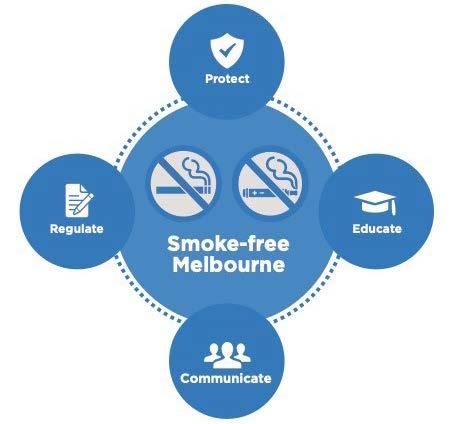
18 SEEING THROUGH THE HAZE | CLASSROOM RESOURCE YEARS 9–10 PART 3 – MAKING CHANGE
FOUR DOMAINS FOR CHANGE
5. Take a look at the graph showing smoking prevalence and tobaco control in Australia, which includes the campaigns to control tobacco use. Thinking of the four domains for change, which of the campaigns would relate to which different domain for change?
Regulate: Protect:
Educate: Communicate:
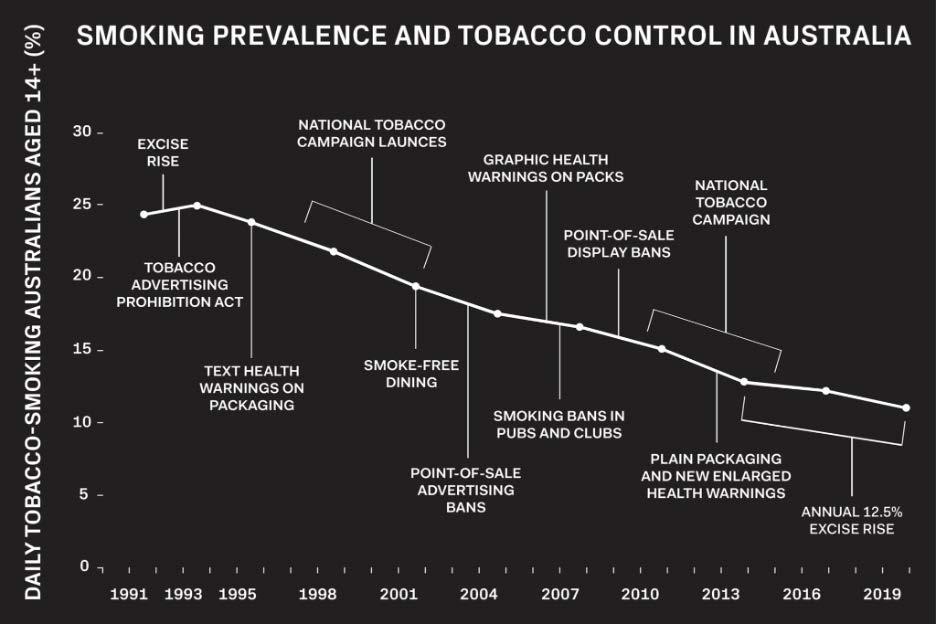
Source: https://www.acmi.net.au/works/121942--smoking-prevalance-and-tobacco-control-in-victoria/
6. In your campaign for a smoke and vape-free space, , or stopping vaping, think about which of the domains for change you would include and how your campaign would relate to each area.
19 SEEING THROUGH THE HAZE | CLASSROOM RESOURCE YEARS 9–10 PART 3 – MAKING CHANGE
Campaign for vape- and smoke-free environments
Drafting the campaign
In 2023, the Federal government announced a range of measures to more strictly regulate the sale and distribution of e-cigarettes in Australia. But we need to do more to address the other domains for change (especially in education and communication).
Drawing on their understandings from the previous sections it’s time to plan and design your campaign. You can refer to the Smoke-free Melbourne Policy Development campaign, QUIT's See through the Haze campaign, and the posters and materials developed by The Real Cost, which you saw at the start of this project.
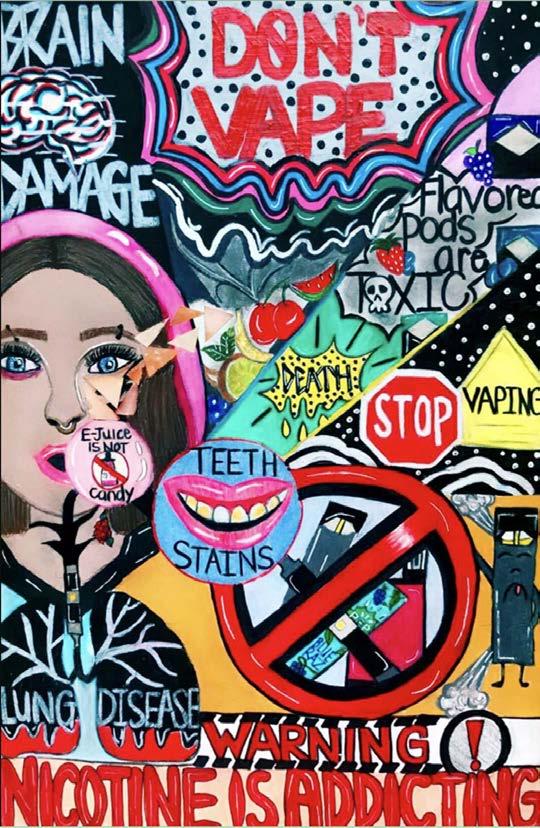
Getting started
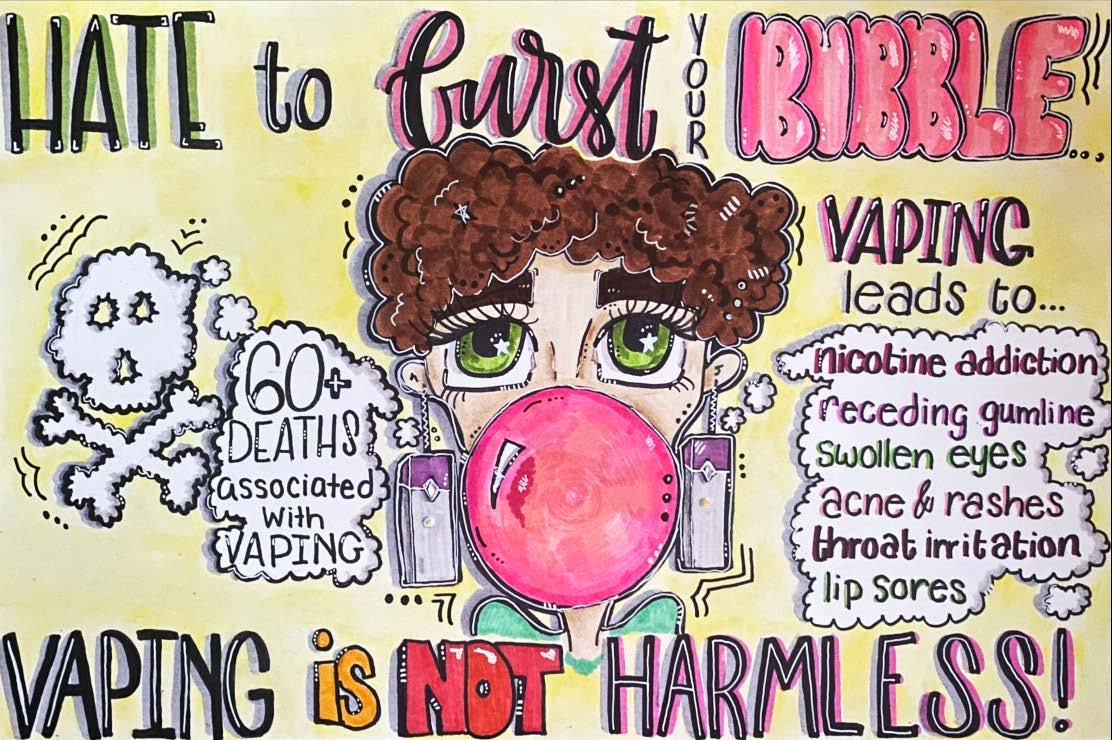
• Select your domain for change that your campaign will address (protect, regulate, educate, communicate).
• What do you want your campaign to achieve?
• Who is the main audience and why?
• What medium will they use to share the campaign? and why?
• What tactics will you use in your campaign?
• Document your planning using tools such as Padlet, Mural, Docs or Word.
What will you research?
Cultural, social or ethical perspectives, medical aspects; personal perspectives; community perspectives?
How will you present your findings?
Think of a clear and effective way to present your findings within your campaign. (Video, website, powerpoint, social media etc)
What type of references will you use?
Videos; internet; talking to teacher, parents, peers; books; pamphlets; Government documents and protocols
Working as a group vs working as an individual
Each group member can prepare a brief draft of the campaign layout, such as listing sections that will be covered. The group can then select one draft to continue to work on. The group adds in images, research, data, data analysis, case studies, evidence.
Make sure to collect information on multiple anti e-cigarette viewpoints, don’t just use your own. Identify trends and exceptions in data collected, and provide an analysis of the data by summarising trends and outliers. Use references provided as well as any other reliable and valid sources you find. As a group, make sure each group member always has something to do and that all aspects of the campaign are covered.
Make a plan or timeline for the completion of each task.
20 SEEING THROUGH THE HAZE | CLASSROOM RESOURCE YEARS 9–10 PART 3 – MAKING CHANGE
Source: The Real Cost campaign posters
Task marking rubric
Criteria 3 marks 2 marks 1 mark
Organisation of material around e-cigarettes
Group is engaged in inquiry process
Revision and reflection
Critical thinking
Voice and choice
The whole project is centred around the four domains of change that capture the essence of a vape- and smoke-free space
Students are engaged in a rigorous process of: questioning, researching, answering
Students consistently use feedback productively to contribute to a high quality campaign
Students build skills in critical thinking, problem solving, collaboration and communication
Students make their own choices about the way they work to produce their campaign
Reflection
Most of the project is centred around the four domains of change that capture the essence of a vape- and smoke-free space
Students are engaged in a process of: questioning, researching, answering or 2 of the about in a rigorous way
Students sometimes use feedback productively to contribute to a high quality campaign
Students build skills in any three of the following: critical thinking, problem solving, collaboration and communication
Students occasionally make their own choices about the way they work to produce their campaign
The project loses focus due to not being centred around the four domains of change or capturing the essence of creating a vapeand smoke-free space
Students are engaged in one of the following in a rigorous way: questioning, researching, answering
Students occasionally use feedback productively to contribute to a high quality campaign
Students build skills in two of the following: critical thinking, problem solving, collaboration and communication
Students struggled to make their own choices about the way they work to produce their campaign
1. Given your research — and your new knowledge and skills — what would you advise your school to do to create a supportive smoke and vape-free environment?
2. What would you now say are the main harms associated with using e-cigarettes for young people?
3. How would you now suggest that we reduce the harms associated with vaping?
Total 21 SEEING THROUGH THE HAZE | CLASSROOM RESOURCE YEARS 9–10 PART 3 – MAKING CHANGE





























